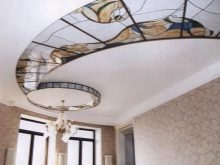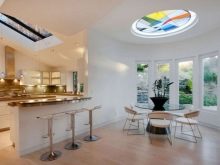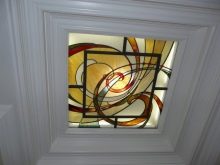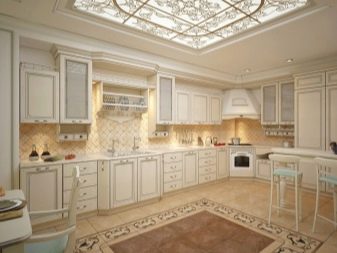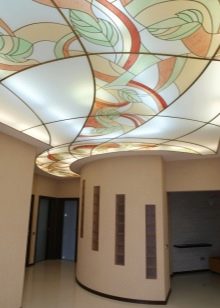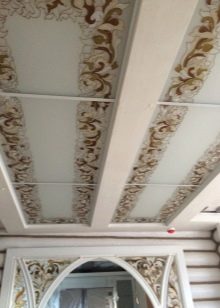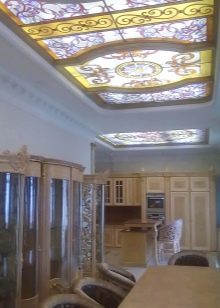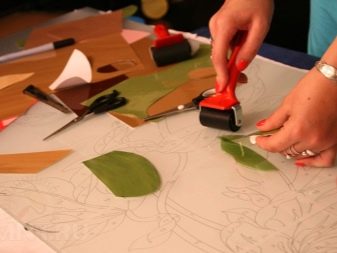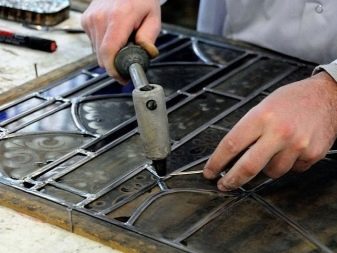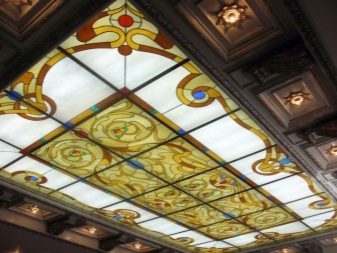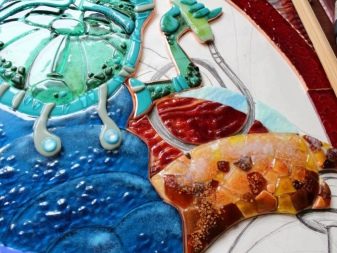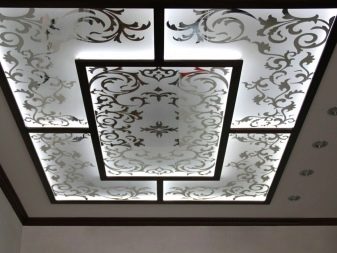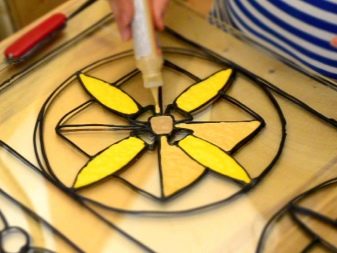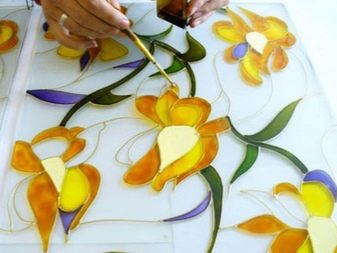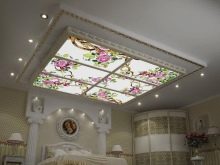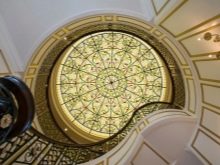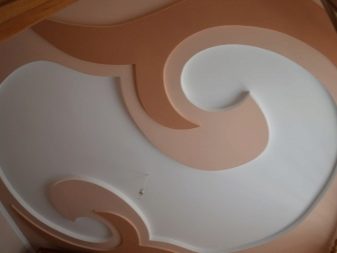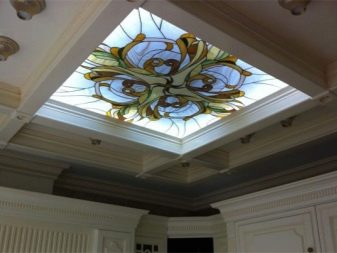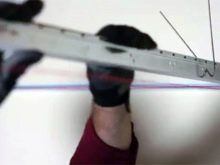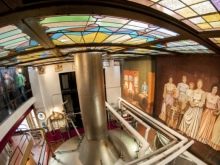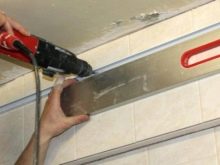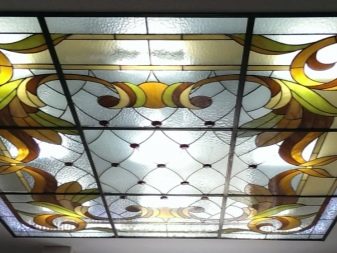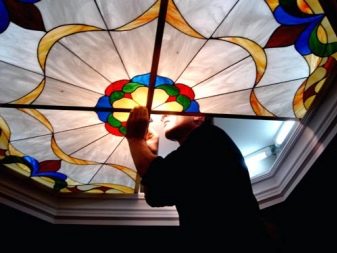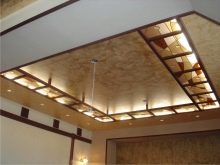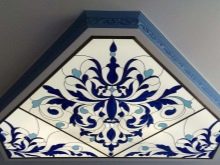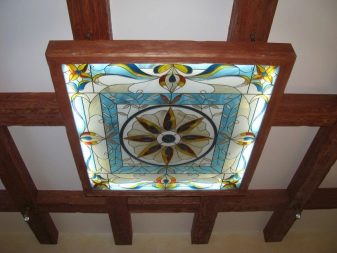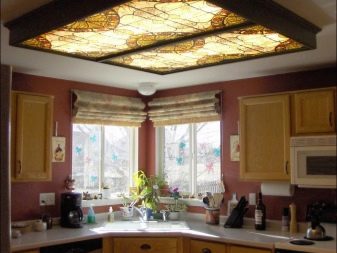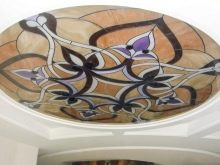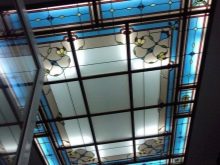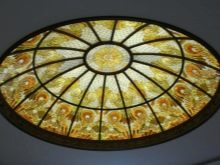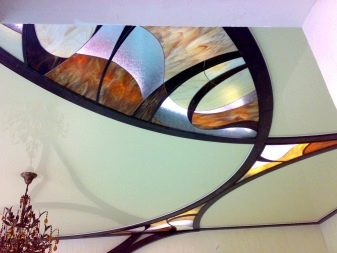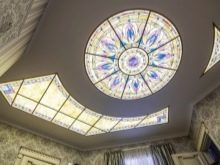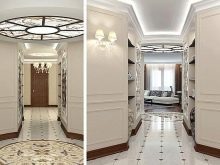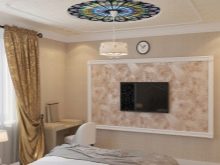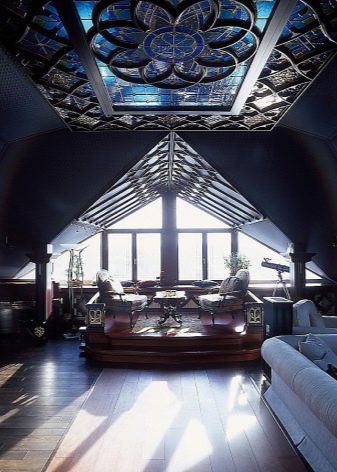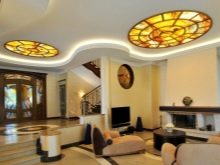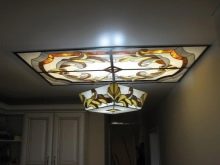Stained glass ceilings: features and benefits
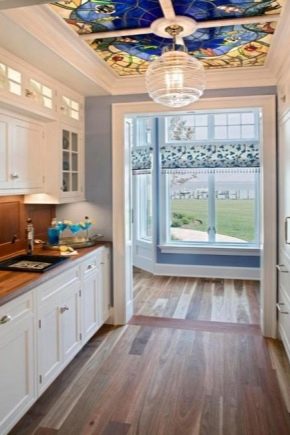
Modern stained glass windows are not at all those stained glass windows that poorly transmit light, which were used in the Middle Ages to decorate temples. Now the stained glass can be created in no less than ten different ways and installed on the surface on which the owner wishes, including the ceiling. In addition, the installation of the stained glass window has become much easier and, if desired, you can make it yourself.
The ceiling stained glass windows have a large number of both aesthetic and practical advantages. The most obvious advantage is their uniqueness and amazing beauty.Stained glass ceiling will be the highlight of any room, wherever it was installed.
In addition, these ceilings do not require special care - just enough to avoid the use of hot water and detergents (you can not use either liquid or powder).
This type of ceiling has other advantages:
- Simple and short installation, even if carried out personally. Stained glass suspended design resembles a designer, which is quite easy to assemble in any configuration.
- From the point of view of ecology, the advantages are also obvious - stained-glass ceilings consist of glass and metal, no chemistry is used in the materials for their production.
- The design is practical - any damaged section is easily replaced without harming the rest of the elements.
- Products are easy to clean.
- It is difficult to break the stained-glass windows, if, of course, not to do this intentionally.
- Glass is not susceptible to moisture. The metal is susceptible, but in the case of an aluminum profile, this problem is eliminated. Therefore, this type of ceiling can be installed in the bathroom.
- Glass ceiling visually increases the space, so it can be used in small rooms with low ceilings.
Types of glass for suspended ceiling structures
Today there are at least ten ways to make stained glass canvases. Most of them provide the ability to make a stained glass window by yourself.
- Traditional (classic) the way to create a stained glass window requires a special framework that has both flexibility and durability. Glass elements will be inserted into this frame - each in its own cell. Most often, this frame-frame is made of aluminum.
- Film stained glass window is the most simple and affordable type for self-manufacturing. This can be done with your own hands at home, as it is not a stained-glass window, but an appliqué. Glasses of the desired size are covered with a special stained glass film. This technique also includes a photo printing method, which can be applied directly to the glass or previously to the film, and then transferred to the glass. In addition, you can place the film between the layers of glass.
- Work on fusing technique assumes that the glass fragments are sintered in special furnaces as a whole. Fusing allows you to get both flat and voluminous stained glass.
- As for the fragmented stained glass, its production is possible only in industrial production. The technology of its manufacture is such that separate fragments of specified colors are combined into a single stained glass window. It turns out reliable, durable and does not lose the brightness of paints over time.
- Sandblast type stained glass otherwise called eternal. It is applied using a jet of sand, which is under pressure. This technique allows you to make a matte surface of the stained glass, and not just multi-colored.
- Contour (jellied) equipment similar to the drawing, because to obtain a stained glass window of this type, glass is painted with polymer paints, having previously applied edges from the same polymers or having designated them with a special composition as the contours of the future composition.
- Painted technique no different from drawing gouache or acrylic. Drawing is applied in the same way. Both pouring and painting are not stained glass, but imitate it.
- An interesting etching techniquewhen the glass is treated with a paste with hydrofluoric acid. The pattern on the glass surface is matte and rough in texture.This method allows you to achieve a relief image with a game of light and shadow, focusing on what the etching depth will be.
- Stained glass "Tiffany" they create it this way: all fragments of the future stained glass are wrapped around the perimeter of the ends with copper foil, then they are combined into a single structure with a blowtorch and solder. In this way, you can create not only a flat stained glass window, but also give it any geometric shape. This technique is both the most difficult to perform and the earliest known one. This method was used to decorate window openings, ceilings and arches in medieval buildings.
In addition, it is possible to use combined techniques, for example, Tiffany and classics, or etching and sandblasting.
In general, each of the listed types (except Tiffany) will be suitable for using it in ceiling design.
To avoid monotony in manufacturing, you can either order it from the creation of professionals, or apply the film method in which the glass is covered with a film with a pre-printed photo printing.
Installation of stained glass ceiling do-it-yourself
The installation of most of the stained-glass paintings on the ceiling resembles the installation of the Armstrong-type ceiling, since their arrangement is almost similar to each other. The only difference is what type of profile and decorative inserts to use. Glass inserts are used for stained glass, and pressed paper is used for “armstrong” for the same purpose.
If you paint step by step installation of the ceiling with stained glass, you get the following algorithm:
- The first step is markup. Set the level of the future ceiling construction. On the ceilings mark the point where the fasteners will be installed. For more accurate markup is best to use a laser level.
- The next step is to mount the corners to the walls. Their installation is carried out in accordance with the markings made earlier, either on dowels or on self-tapping screws. Given the gravity of a material such as glass, the fastener pitch should not be more than 30 cm.
- Further, special adjustable suspensions are mounted - “butterflies” with a step of approximately 60 cm in any direction.
- After that, you can proceed to the installation of the profile.This process consists of hanging it on hangers and installing it on a plane.
- At the end of the collection of profiles, it is time to install decorative lighting. When the stained glass ceiling is illuminated, it looks much more impressive and more attractive than the usual one. Illumination can be done using different methods: as a spotlight, and light beams or LED tape.
- The last installation is made directly glass stained glass. They simply invest in the cells that are formed by profiles.
Stained glass ceiling paintings in the interior
There are 3 options for how to install a glass ceiling:
- suspended version (the best that can be thought up for small-sized stained-glass canvases);
- cassette design;
- installation in a box of plasterboards, inside which are hidden wires, lines of communication and ceiling.
The third option is the most inconvenient, because:
- he is bulky;
- requires to decorate the side surfaces of the box, if it is installed in the lower level of the two-tier structure;
- drywall can not withstand the gravity of the glass, so you need additional mounting on metal hangers.
It is impossible to classify stained-glass ceilings by the nature of the pattern, since there are a great many variations, and they are not amenable to gradation.
In form, they are divided into the following types:
- dome;
- round (oval);
- plafond;
- in the form of a square or rectangle;
- non-standard.
For halls with a large ceiling height and overall size, the most successful option is the dome. They can be made exclusively in the technique of "Tiffany".
Round-shaped ceilings look like a chandelier with a large diameter. It is best to perform them in the art deco or modern style (of course, the rest of the interior should be designed in the same style). However, ethnic style can also be a good find, if you choose the appropriate pattern for glasses.
The plafond has a lot in common with the round type, but in shape it most likely approaches the ball. The size of it can be absolutely anything. Ceiling stained-glass windows usually look best when they are installed in a niche. The ceiling mounted in a small bedroom looks spectacular.
The standard shape of the ceiling with stained glass is rectangular or square.They are the easiest to manufacture, respectively, they are the most budget option. In addition, this type of ceiling can be used to decorate any premises, regardless of their size and purpose - both in the corridor and in the kitchen, a rectangular stained glass canvas will look equally impressive.
As for non-standard forms, here the author’s imagination is not limited by anything.
Glass fragments can take any form and shape. For example, an abstraction in the style of a loft can create the illusion of a bottomless, "non-celestial" space.
Illumination in stained glass ceiling
Thanks to the illumination of the stained glass can be weightless, and you can make the image deep and expressive. The result depends on what technique is used. Without installing light sources, it will be difficult to achieve this, because the stained glass window necessarily needs to be properly illuminated. Lighting also helps to paint the room in the selected shades, creating a very special atmosphere.
It is imperative to consider how the number and type of the selected lamps will be combined with the pattern on the stained glass window.Hidden lighting looks very impressive when the light seems to be pouring from the ceiling without seeing a single lamp. It is especially interesting to look at matte ceilings, for example, made using sandblasting techniques.
Chandeliers in stained glass canvases are not used. As a rule, a different backlight is enough for high-quality lighting of the room.
On the installation of the stained glass ceiling you will learn from the following video.
